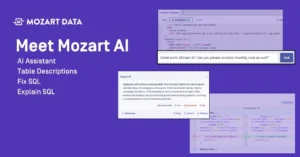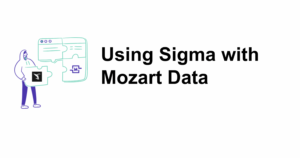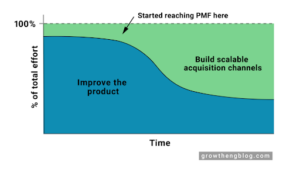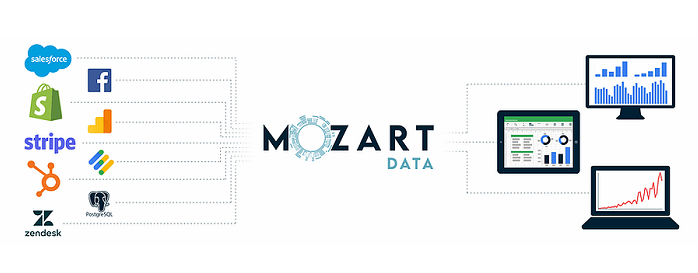
If you work in the ecommerce world, you know that there are a huge number of platforms and services out there to help build your business. From marketing, to social media, to point of sales, to customer support — a successful modern ecommerce company utilizes at least a handful of platforms to run their business.
A big problem you’ll run into is understanding your company’s performance across all of these platforms. Each tool will have its own canned reporting and analytics dashboards. These are useful to quickly understand how any given tool is performing, but you’ll get a much better understanding of overall performance when you combine data from these sources and run analyses across all of them. In the ecommerce world where margins are often low, understanding your data will be the key to long term success.
However, creating these custom reports and dashboards with data from all of your tools can be a tricky process. It comes with its own set of logistical, technical, and monetary challenges, especially if you have a small team without the time or know-how to hack it all together. Your focus should be spent on using data to make informed decisions that increase your bottom line, not wasting time fumbling your way through a spreadsheet. Mozart can help you get to that point by being the foundation of your data-driven ecommerce business.
Common Ecommerce Data Questions and Issues
Here are some common questions that pretty much every ecommerce company is trying to answer:
-
Where do most of our customers and revenue come from?
-
Where are we losing customers in our conversion funnel? How and where should we re engage prospective customers in the funnel to increase sales conversions?
-
Which marketing channel is most effective? What does LTV and CAC look like across all of our marketing platforms?
You can’t go to any one of your ecommerce tools to answer these holistic questions. Instead, you need to do analysis that utilizes relevant data from each of your tools. For most ecommerce companies, this means combining data from your marketing, social media, website/app analytics, point of sale, and customer support platforms.
However, creating a good system that combines all of your data can be frustrating, time-consuming, and very costly. Some issues you’ll run into are:
-
Wasting time by manually pulling data from each of the platforms your company uses.
-
Deciding on a place to store your data to make sure that consistent analysis is done throughout your company. All too often does one team get completely different results than another team, solely because their source data wasn’t consistent.
-
Finding someone with a high level of analytics proficiency to put the data all together and understand it well. Outsourcing this work to freelance data analysts can be costly and finding a good analyst can take a lot of time.
The good news is that Mozart is here to help solve all of these problems for you.
How Mozart Data Can Help Ecommerce Companies Grow
After a quick set-up meeting w/ the Mozart team, you’ll have data from all of your ecommerce tools stored in a central location. You now have a single source of truth for your data. No more data inconsistencies and no more time wasted scouring multiple platforms for the data you need.
Then, we’ll use all of your connected data sources to help create reports and dashboards specific to your company’s needs and goals. These dashboards will allow you to track performance across all of your tools in real-time, things like:
-
CAC and LTV for all of your acquisition channels
-
Conversion funnels
-
Email and advertising campaign performance
Now you can focus on what truly matters — using your data to make timely and effective business decisions to grow your ecommerce company.
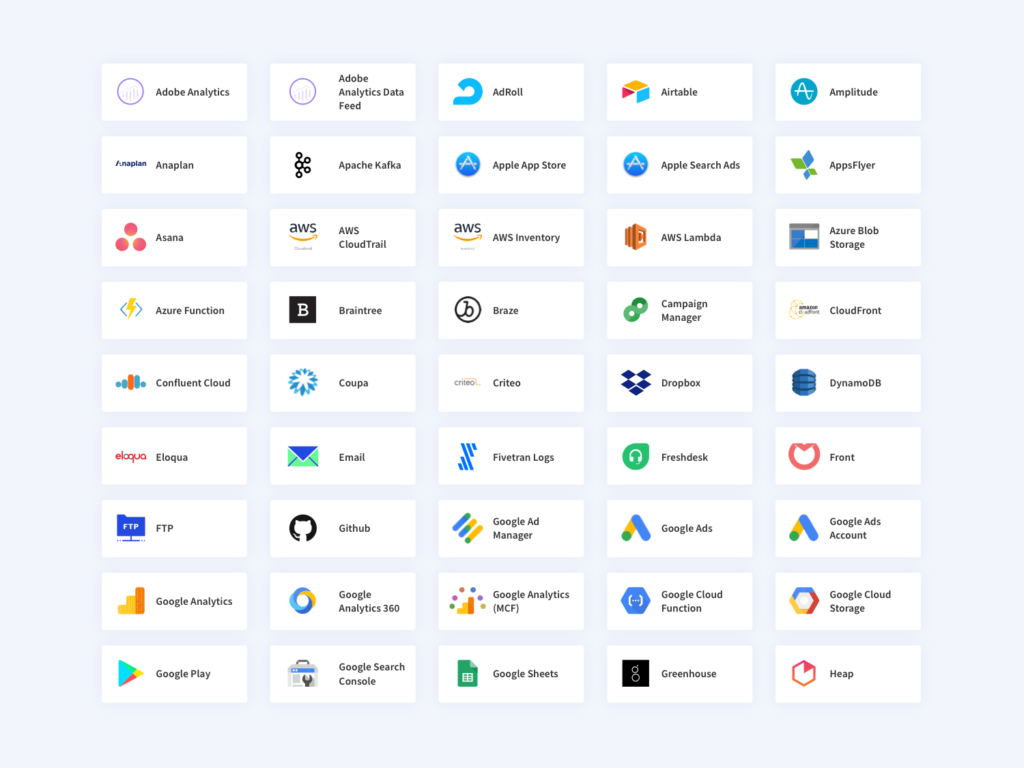
As you add more tools to run your business, you’ll be able to easily integrate those data sources to your Mozart account w/ simple, code-free connections. Check out a list of our 120+ connectors here. We are also always adding new connectors to support the needs of our customers.
The Power of Combining Data – Acquisition Channel LTV Example
Imagine a company that uses Facebook and Instagram for advertising and Shopify for its point of sale.
The company decides to run some digital marketing campaigns with equal spends between Facebook and Instagram. The campaigns run for a month and the results show that Facebook ads had a 10% click-through rate and Instagram ads had a 2% click-through rate. That indicates that Facebook might be a better acquisition channel for this company to focus on.
6 months later, the company runs an LTV report using the emails of those who clicked on the ads. The LTV report looks at each unique person that clicked on the Instagram and Facebook ads and combines it with Shopify sales data to get their sales history. The company notices that the LTV of a customer coming from Instagram is 10x that of one coming from Facebook. They find out that although more people were clicking on the Facebook ads, those people were less likely to make a purchase. Not only that, but the customers acquired from Instagram were consistently coming back to the store and placing multiple orders, making them much more valuable long term customers.
This is the type of insight that’s impossible to know when all of your data is siloed. You can know how well your advertising campaigns work from an engagement perspective, but it’s hard to see anything beyond that point. Only by combining data sources together are you able to get a better understanding of your customers and the true effectiveness of your acquisition channels.
—
Take action now to raise your ecommerce data game by requesting a demo here. We will talk through the specific goals your business has and show you how the Mozart platform can be the best first step to hitting them.
